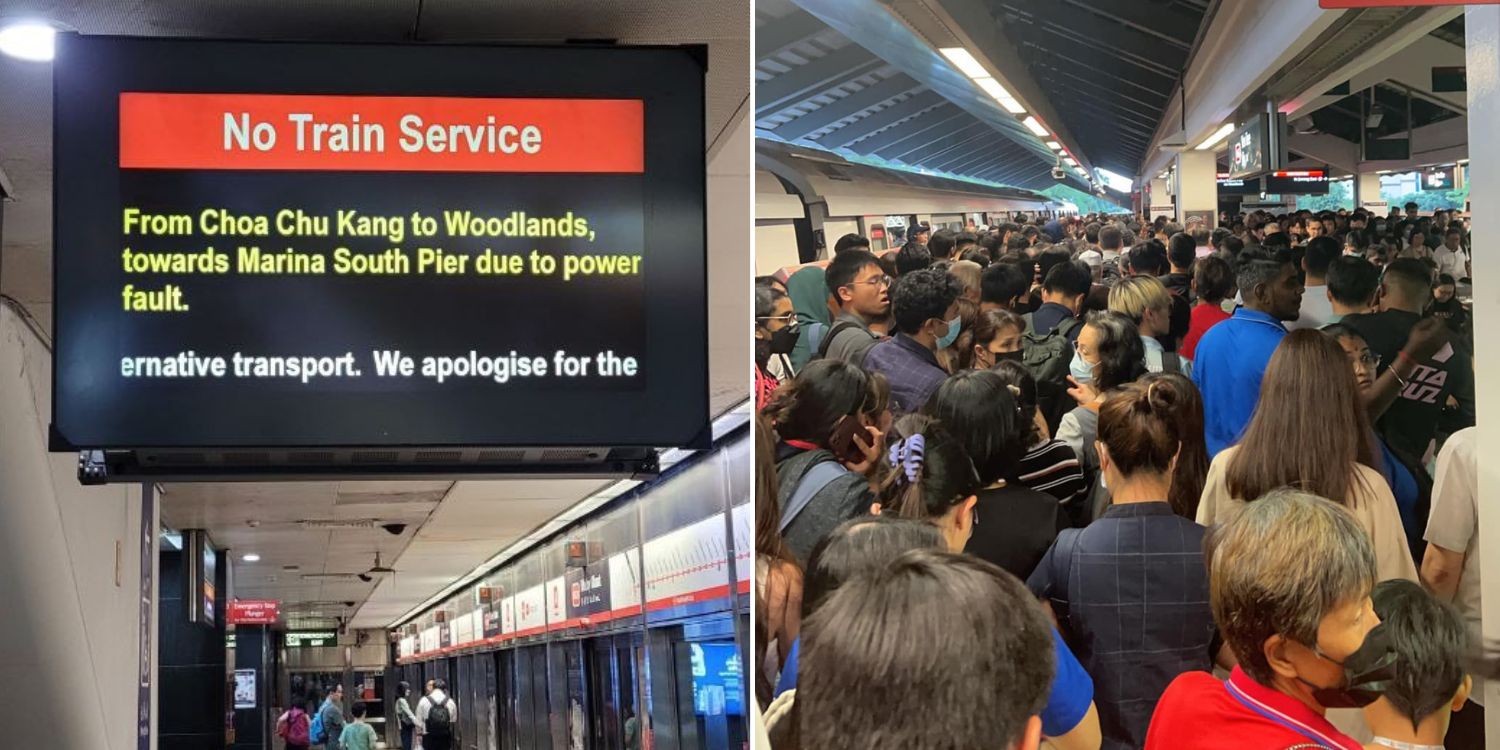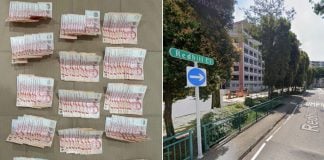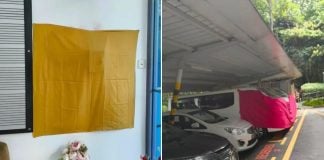Condition of surge arrestor could’ve deteriorated over time, says LTA in review of 3 June MRT disruption
A surge arrestor that didn’t work was one of the causes of an MRT disruption earlier this month, the Land Transport Authority (LTA) has said.
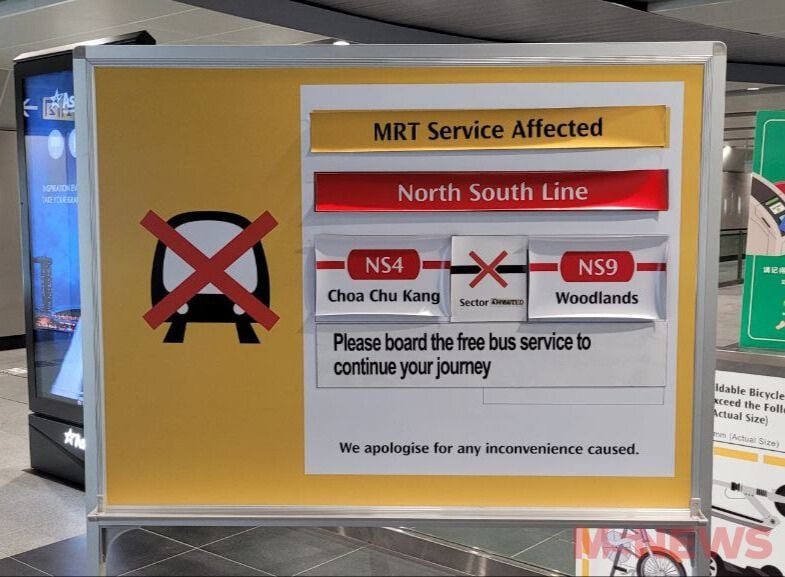
The condition of the surge arrestor, which was meant to protect against lightning strikes, could’ve “deteriorated over time”, LTA added.
Lightning strike damaged Kranji MRT power control box, causing power trip
LTA released the results of a review of the 3 June MRT disruption in a Facebook post on Saturday (15 June) night.
It said a lightning strike damaged a trackside power control box in Kranji MRT station at 5.46pm that day.
This caused a small fire to break out in the power control box, which was 20m from the station platform, SMRT said in a Facebook post on 3 June.
Commuters at Kranji station saw a number of firefighting vehicles outside the station, and firefighters walking into the restricted area of the platform.
The lightning strike also damaged numerous components, especially the disconnecting switch in the power control box, causing the power to trip, SMRT added.

Source: SMRT on Facebook
Surge arrestor “did not operate as intended” during 3 June MRT disruption
During incidences of transient power surges — such as a lightning strike — a surge arrestor is supposed to protect outdoor equipment, LTA said.
However, on 3 June, the surge arrestor in the affected power control box “did not operate as intended” when lightning struck.
That’s because the component’s condition “could have deteriorated over time”, LTA added, saying:
LTA is working with the operators to review the maintenance frequency of the surge arrestors.
The other equipment in the vicinity wasn’t damaged during this incident.
Large crowds formed during 3 June MRT disruption
As SMRT engineers had to physically access the power control box on the viaduct, inclement weather and lightning risks prolonged the service recovery, LTA said.
Meanwhile, train services were unable to operate. Service on the NSL came to a standstill between Choa Chu Kang and Woodlands stations during the evening peak hour.
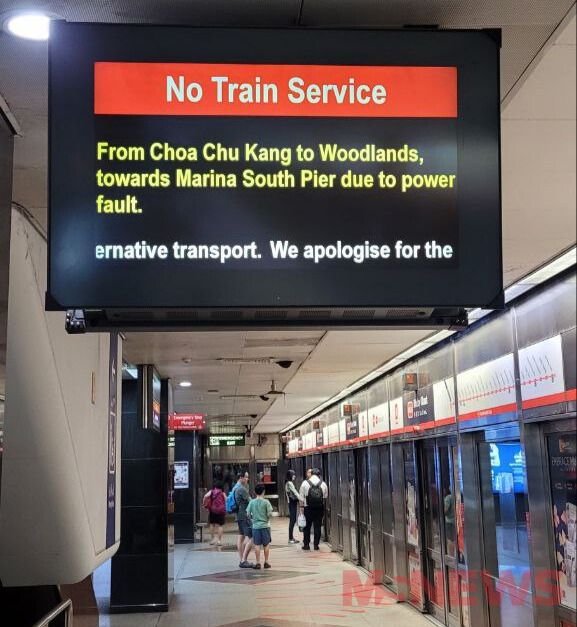
Commuters shared photos of hordes of people stranded outside Yew Tee station, all looking for alternative means of transport.
This also caused scores of people inside the station to have difficulty getting out due to the crowds.
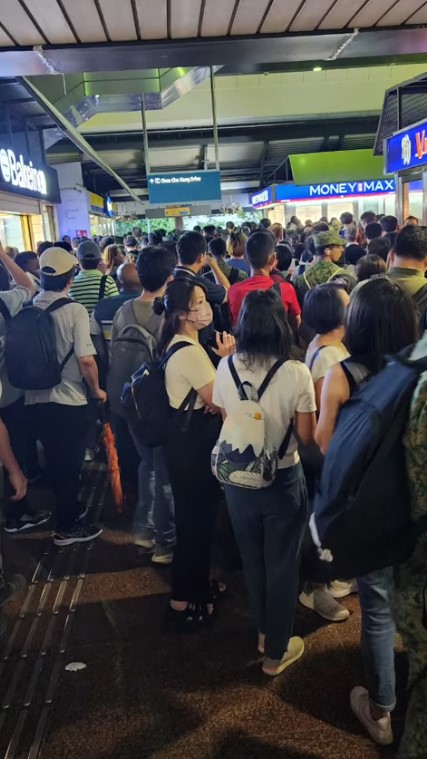
Source: jasmine.ng23 on TikTok
Though free bridging bus services were available, a viral TikTok video showed tempers fraying when a large group of people seemingly attempted to board a bus, preventing those inside from alighting.
@charliegoldy857 NS line train faulty, at kranji mrt then bridging bus only to yewtee
Bridging buses not a substitute for disrupted rail services: LTA
In its report on the incident, LTA said bridging buses “cannot be a full substitute for disrupted rail services”.
That’s because a bus has a capacity of 80 to 120 passengers compared with trains, which can carry up to 1,200.
Thus, while bridging buses play an important role during an MRT disruption, LTA added:
This is why our longer-term plan is to build up the resilience of the rail network with new lines that are inter-connected with existing lines, so that most commuters could switch to an alternative line when a rail line is disrupted.
Maintaining more standby buses will incur higher costs: LTA
LTA has taken note of public feedback on what can be improved during future disruptions, it said.
Specifically, it will review a suggestion that more standby buses be maintained so they can be activated during an MRT disruption.
However, this will “incur higher costs” for the public transport system, LTA added, so it must be “carefully assessed”.
Other improvements to be worked on include providing clearer information via public announcements and improving crowd-control measures at stations.

Source: SMRT on Facebook
3 June MRT disruption more serious than others in last 2 years
Ultimately, the MRT disruption on 3 June was more serious than other major disruptions over the past two years, LTA said.
This was because some of the previous disruptions occurred during off-peak hours. Train services could also continue operating in other cases, albeit at reduced speeds.
Service fully resumed only at 8.10pm, more than two hours after the lightning strike.
SMRT said its engineers worked through the night to replace the burnt-out disconnecting switch in the control box and fully restore the power system.
Also read: Lightning strike causes 2-hour MRT service disruption along North-South Line on 3 June
Lightning strike causes 2-hour MRT service disruption along North-South Line on 3 June
Have news you must share? Get in touch with us via email at news@mustsharenews.com.
Featured image from MS News and adapted from Constantine Yan on Facebook.
